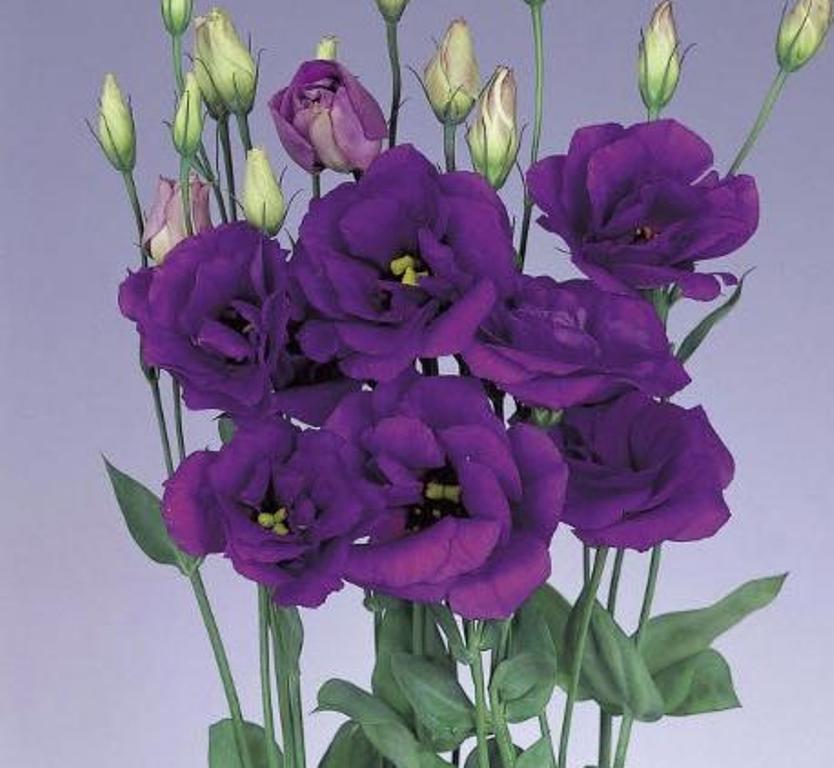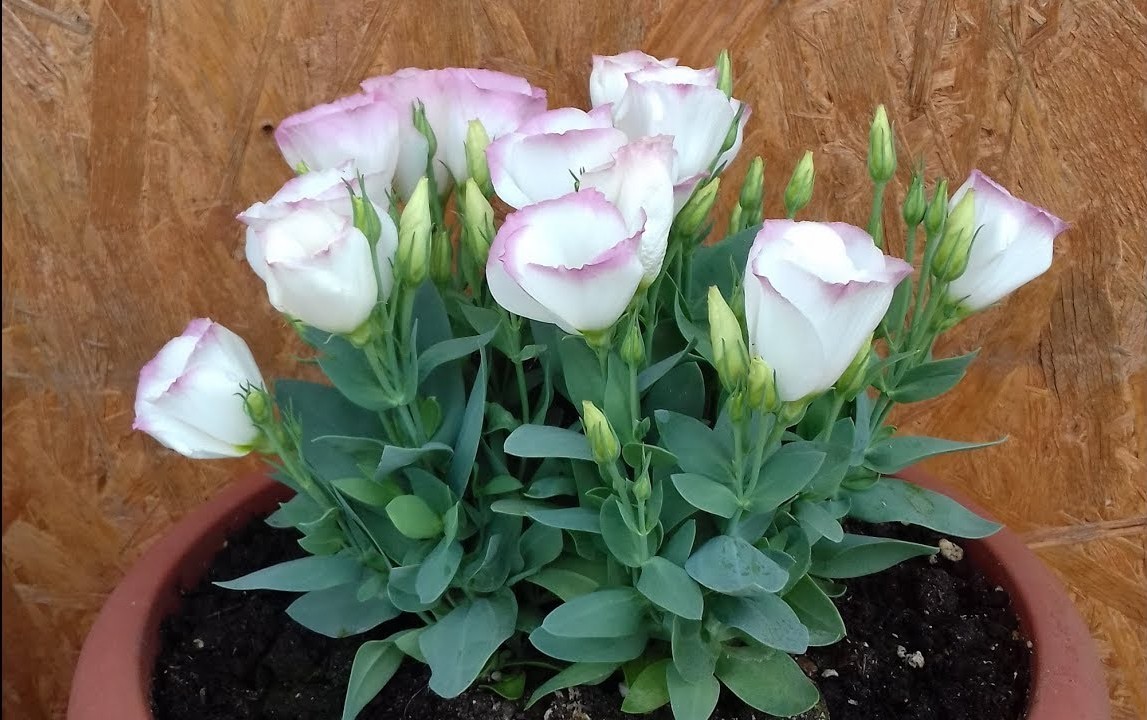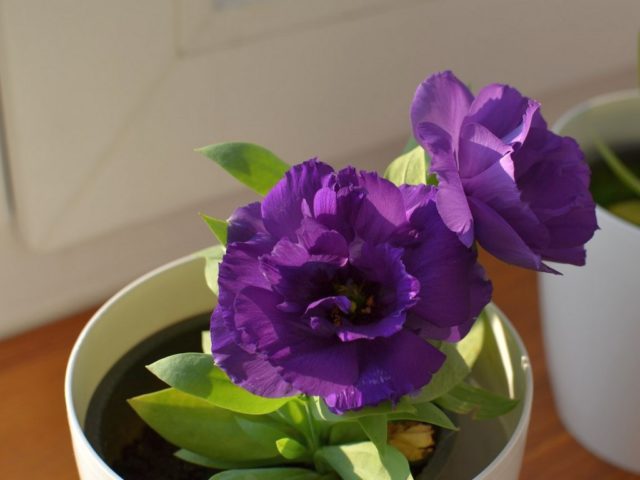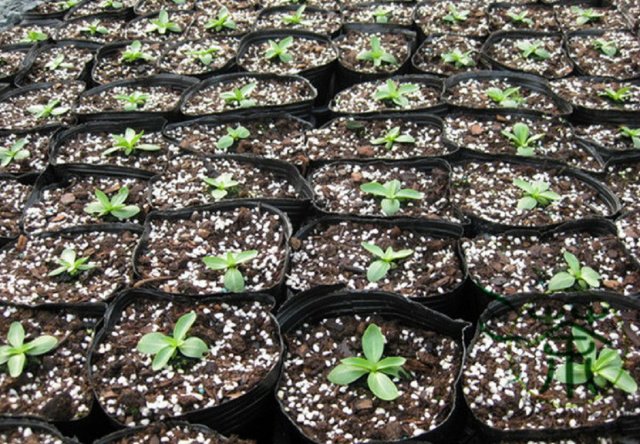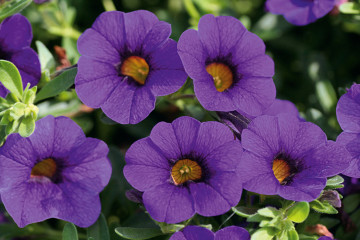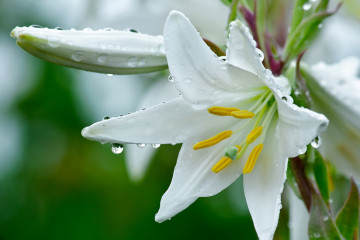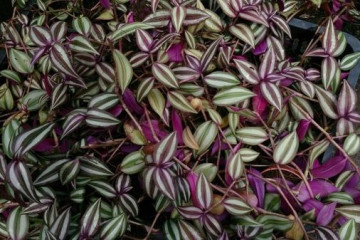Eustoma flower
Content:
Eustoma is rare in gardens or on a windowsill. The French rose is able to amaze everyone with its beauty. The plant is ideal for landscaping balconies and loggias. It can be annual, biennial, or perennial.
Origin
The homeland of the plant is Central America. Belongs to the Gorechavkov family. In the wild, it can bloom in Latin America, Africa, and also in Australia.
Eustoma is also called lisianthus or French rose. The last name is given so because of the similarity with a rose. Lisianthus in translation means "bitter plant". There is a misconception that the French rose is not affected by diseases and pests. This is not true - the plant suffers from parasites, insects. If the rules for caring for eustoma are not followed, diseases occur.
Description
Eustoma is a rose-like flower. In contrast, Lisianthus has no thorns. Differs in a significant number of color options and the degree of terry. There are about 30 varieties of the plant.
The French rose tolerates well the climatic conditions of the European part of Russia. In winter, it is best to move the plant from the open field to the room. Without a transplant, it grows for several years.
The eustoma flower is undersized, large, with almost any color option. The sheet has a classic elliptical shape.
Lisianthus can grow up to 75 cm tall when in the garden. At home, the plant rarely exceeds 25 cm.If you cut the bush correctly, then over time it will have a very beautiful shape.
How eustoma blooms
The flowers of this plant have all kinds of colors. In diameter they reach 8 cm. In the semi-open form they look like a rose, in the fully blossoming form they look like poppies. There can be up to 30 flowers in an inflorescence.
Flowers can stand for a long time in cut form.
How Lisianthus grows
The stems of this plant are strong. In tall varieties, they reach 1 meter in height. Low-growing varieties are much lower - from 20 to 30 cm, sometimes even less.
The stems branch intensively. Thanks to this property, the bush looks like one big and very beautiful bouquet.
Types and varieties
Most varieties of the French rose have bright flowers, bloom for a long time and profusely. Propagated by cuttings and seeds. Popular varieties have bell-shaped flowers, sometimes double. The advantages of hybrid varieties are early and long flowering, resistance to diseases and unfavorable conditions (temperature fluctuations, non-compliance with watering or feeding rules).
Eustoma white
Refers to hybrid varieties. The plant grows quickly, blooms early. The peak of flowering of white eustoma is in July. Differs in large, large inflorescences with a pleasant aroma. The flower resembles a large, beautiful rose. For growing eustoma at home, the pot must have a diameter of 10 to 20 cm.
Eustoma undersized
Low-growing eustoma varieties are ideal for indoor cultivation. The plants are compact and grow no more than 20 cm in height. The average diameter of the flowers is 5 cm. The flowers contrast very nicely against the background of a compact bush in a pot.
The color range of undersized perennials is represented by blue, purple, purple, pink, white colors. The flowers are simple and funnel-shaped.
Low-growing varieties are very easy to grow with seeds. The seeds are placed in disposable peat pots. Once three pairs of leaves are formed, they can be planted in a larger pot. The root system of a potted plant is not injured with such a planting.
Terry varieties
Terry varieties are suitable not only for growing in the garden, but also indoors. Many varieties of terry eustoma have been bred with all sorts of shades. You can find packages where there are plant seeds with both dazzling white and almost dark purple hues. Here you can also find pink or red eustoma flowers.
All varieties of terry eustomas are distinguished by their purity and color saturation. They bloom intensively for a long time.
Eustoma purple
The varieties are distinguished by lilac, bluish, blue, purple petals. They are characterized by tall stature. Some large-flowered specimens can grow up to 80 cm in height.
Bushes of eustoma flowers of the Little Mermaid or Sapphire are characterized by intense and rapid growth. The flowers are large, up to 7 cm in diameter, double. Their core is deep purple, rich in color. The stamens are yellow.
Some purple varieties are specially designed for indoor potting. Such bushes are compact: the height of some of them is from 13 to a maximum of 17 cm. The flowers are small, all of a rich purple hue.
Eustoma lavender
Another name for the varieties is light purple. In many ways, lavender French rose is similar to purple. The difference is in a double, large, light purple flower that resembles a full rose. The plant is tall.
Eustoma lilac
This perennial eustoma is very similar to the purple eustoma. The difference is in the shade of the flowers: in an adult perennial, they are a very beautiful dark purple or lilac shade.
How to grow at home
In the climatic conditions of Russia, the ideal option would be to grow eustoma in a pot. So the plant will not suffer from fluctuations in temperature, humidity. By applying additional lighting, it is possible to ensure the formation of lush flowers.
Florists are interested in how to care for eustomas. When growing homemade austoma or eustoma, you need to follow the step-by-step recommendations. All of them are associated with compliance with the conditions of illumination, watering, and temperature. By following the tips for planting and caring for an eustoma flower, you can achieve super lush and long flowering.
The best lighting for eustoma, or lisianthus, is ambient light from the sun.
When growing a plant at home, overdrying can kill it. Therefore, the soil must be constantly moistened. At the same time, the plant is afraid of waterlogging. Watering the soil should only take place if its top layer is dry.
You need to water the plant at the root and in no case direct a stream of water to the leaves. From this they can disappear. In cool weather, in case of improper watering, there is a possibility of developing a fungal disease. Due to the tendency to fungal diseases, the flower is not sprayed.
The optimum temperature for a plant is about 20 degrees during the day and at least 15 degrees at night. During wintering, the plant is transferred to a room with an average temperature of about 12 degrees.
A home transplant is not performed. This is because the plant has very delicate and small roots. In case of urgent need, the plant can be placed in another pot using the transfer method.
The plant is fed with a complex fertilizer for indoor flowers. The first time you need to do this is 2 weeks after planting in a pot. Then feeding is carried out regularly according to the instructions. Top dressing is especially important for flowering plants.
Cuttings of this plant rarely form roots. When dividing a bush, special care must be taken, as there is a possibility of injury to it or injury to the root.
Growing a plant from seeds
You can grow eustoma flowers at home by sowing purchased seeds. It is very difficult to collect them on your own. The germination rate of purchased seeds is no more than 60%.
They need to be sown in winter or early spring (in March) in good permeable and breathable soil. It should include garden soil and peat. Having moistened it well, pour the seeds on top and do not cover them. Then the pot is covered with plastic wrap and placed in a well-lit and warm place with a temperature of about 25 degrees. You can open it after the first leaves appear on the sprouts.
It will not be superfluous to light up the seeds. As a result, they should receive about 14 hours of light during the day. At night, the container with the sown seeds should be placed in a cooler place with a temperature of at least 17 degrees. This is how the seeds are hardened, and the plant's resistance to unfavorable environmental factors increases.
Seedlings appear in 2 weeks. From this time on, watering is reduced. It is advisable to transfer the seedlings to a cool place.
Seedlings grow slowly. The dive is carried out after the appearance of three pairs of leaves. Small plants are placed in separate pots where they continue to grow.
Eustoma is a flower that will decorate every apartment or house. Thanks to the variety of shades, the plant is able to create a real floral palette.
Video
